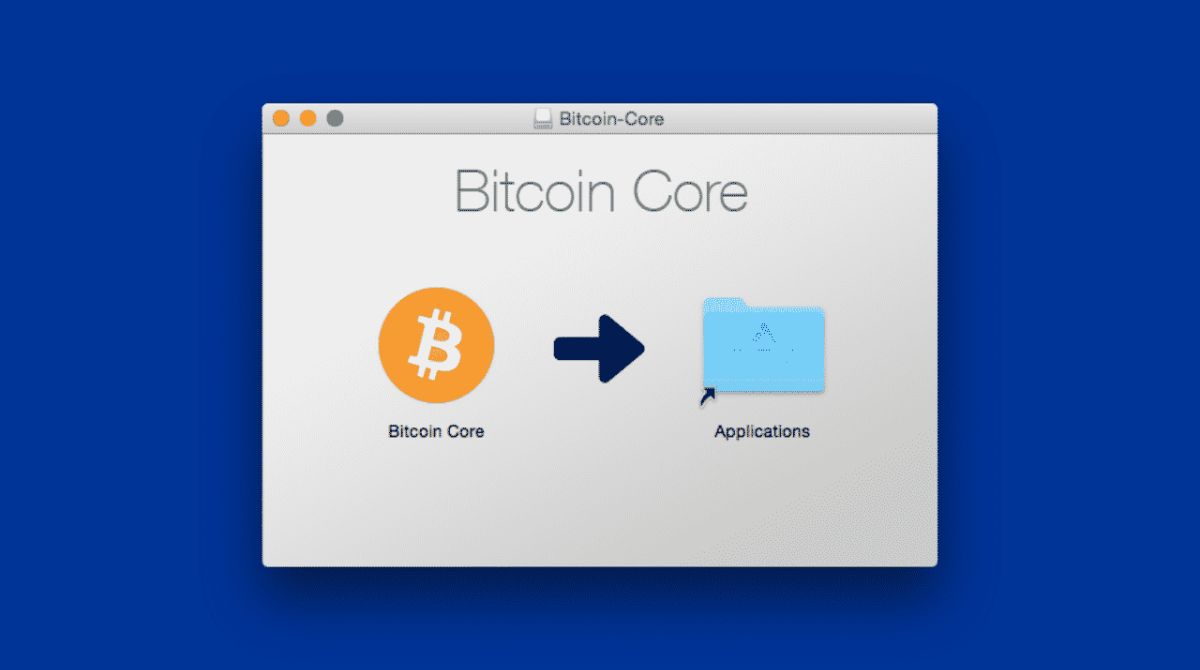Introduction
Welcome to the exciting world of Bitcoin! In this article, we will explore the revolutionary concept of digital currency and delve into the inner workings of Bitcoin. Since its inception in 2009, Bitcoin has gained immense popularity and sparked a global phenomenon.
Bitcoin is a decentralized, peer-to-peer digital currency that operates on a technology called blockchain. Unlike traditional currencies issued by banks or governments, Bitcoin is not tied to any central authority. It allows users to make secure, anonymous transactions without the need for intermediaries.
One of the key features of Bitcoin is its transparency. All transactions made with Bitcoin are recorded on the blockchain, a public ledger that is accessible to everyone. This provides an extra layer of security and prevents fraudulent activities.
Bitcoin has become increasingly popular due to several factors. First, it offers a way to transfer money quickly and at a lower cost compared to traditional banking systems. Transactions can be completed within minutes, regardless of the location of the sender and recipient.
Second, Bitcoin offers a level of privacy that is difficult to achieve with traditional banking systems. Users are identified by their digital wallet addresses rather than their personal information, ensuring a certain level of anonymity.
Third, Bitcoin has gained traction as an investment opportunity. The value of Bitcoin has experienced significant volatility over the years, leading to potential financial gains for early adopters and investors.
However, it is important to note that Bitcoin also has its limitations. The decentralized nature of Bitcoin means that there is no central authority to regulate the currency, which can lead to price fluctuations and potential risks for users.
In the following sections, we will explore how Bitcoin works, including concepts such as distributed ledger technology, Bitcoin mining, transactions, wallets, and the security measures in place to protect users’ funds. We will also discuss the advantages and disadvantages of Bitcoin and provide insights into the future of this digital currency.
So, if you’re ready to dive into the fascinating world of Bitcoin, let’s explore the inner workings of this decentralized digital currency together!
What is Bitcoin?
Bitcoin is a digital currency that was created in 2009 by an unknown person or group of people using the alias Satoshi Nakamoto. It is the first decentralized cryptocurrency, meaning it operates on a peer-to-peer network without the need for a central authority like a bank or government.
Unlike traditional forms of currency, such as the US dollar or the Euro, which are issued and regulated by central banks, Bitcoin operates on a technology called blockchain. The blockchain is a decentralized ledger that records all Bitcoin transactions ever made.
Bitcoin can be thought of as digital cash that is stored in a digital wallet. It allows users to send and receive funds over the internet, making it a fast and convenient way to conduct online transactions.
One of the main characteristics of Bitcoin is its limited supply. There will only ever be 21 million bitcoins in existence, which makes it a scarce asset. This limited supply, combined with increasing demand, has contributed to the value of Bitcoin over time.
Another key feature of Bitcoin is its pseudonymous nature. While all Bitcoin transactions are recorded on the blockchain, the identities of the users involved in the transactions are not directly linked to their real-world identities. Instead, users are identified by their unique wallet addresses.
Bitcoin has gained popularity for several reasons. It provides a way for individuals to have full control over their finances without relying on intermediaries like banks. It also offers a level of privacy and security that is difficult to achieve with traditional banking systems.
Furthermore, Bitcoin has the potential to revolutionize the global financial system by providing financial services to the unbanked population and enabling cross-border transactions with lower fees and faster processing times.
However, it is important to note that Bitcoin is not without its challenges. Its decentralized nature and lack of regulation can make it prone to price volatility, scams, and illegal activities. Additionally, the scalability of the Bitcoin network has been a topic of debate as it has faced challenges in handling a high volume of transactions.
In the next section, we will explore how Bitcoin works, including the technology behind it, the process of mining new bitcoins, and how transactions are conducted on the network.
How Does Bitcoin Work?
At its core, Bitcoin operates on a technology called blockchain, which is a decentralized ledger that records all Bitcoin transactions. By utilizing cryptographic principles, Bitcoin ensures the security and integrity of the network.
When a user wants to send Bitcoin to another user, they create a transaction. This transaction contains the sender’s digital signature, the recipient’s address, and the amount of Bitcoin being sent.
Once the transaction is created, it is broadcasted to the Bitcoin network. Miners, who are participants in the network, collect these transactions into groups called blocks. These blocks are then added to the blockchain in a sequential order.
But how are these blocks added to the blockchain?
This is where the process of mining comes into play. Mining involves solving complex mathematical puzzles using powerful computers. Miners compete to solve these puzzles, and the first miner to find the solution earns the right to add the next block to the blockchain.
When a miner successfully mines a block, they are rewarded with a certain amount of newly created Bitcoin. This serves as an incentive for miners to contribute their computational power to the network and secure the blockchain.
Furthermore, the blockchain ensures the integrity of the Bitcoin network by making it extremely difficult to alter previously confirmed transactions. Once a transaction is included in a block and added to the blockchain, it becomes a permanent and immutable record.
Bitcoin transactions are verified by nodes in the network that maintain a copy of the blockchain. These nodes ensure that all transactions are valid and that they adhere to the consensus rules of the Bitcoin protocol.
In order to access and manage Bitcoin, users utilize digital wallets. These wallets can be software wallets installed on computers or mobile devices, or they can be hardware wallets that store the user’s private keys offline. Private keys are essential for securely signing transactions and accessing the user’s Bitcoin.
Bitcoin provides a high level of security by using cryptographic algorithms. Each transaction is secured with a digital signature, which verifies the authenticity and integrity of the transaction. Additionally, the decentralized nature of the blockchain makes it resistant to hacking and manipulation.
Bitcoin has gained popularity because it offers several advantages over traditional forms of payment. It allows for fast and inexpensive transactions, both domestically and internationally. It also provides users with greater control over their finances and the ability to maintain a level of privacy.
However, Bitcoin is not without its drawbacks. Its price volatility and the potential for scams and hacking pose risks to users. Additionally, the scalability of the Bitcoin network has been a topic of debate as it has faced challenges in handling a high volume of transactions.
In the next section, we will explore distributed ledger technology, which is the foundation of the Bitcoin network, and how it contributes to the security and transparency of the system.
Distributed Ledger Technology
Distributed Ledger Technology (DLT) lies at the heart of Bitcoin and many other cryptocurrencies. It is a decentralized system that allows for the secure and transparent recording of transactions. DLT utilizes a network of computers, known as nodes, to maintain a shared ledger that is accessible to all participants.
In the case of Bitcoin, the distributed ledger is known as the blockchain. The blockchain consists of a series of blocks, each containing a list of verified transactions. Every node in the network maintains an identical copy of the blockchain, ensuring that all transactions are recorded accurately and cannot be tampered with.
The use of a distributed ledger provides several benefits. Firstly, it eliminates the need for a central authority, such as a bank or government, to validate and store transaction records. This decentralization ensures that no single entity has control over the entire system, making it more resilient to censorship and single points of failure.
Secondly, DLT ensures transparency and accountability. Since all transactions are recorded on the blockchain and are accessible to all participants, there is a high level of transparency in the system. Anyone can view the transaction history and verify the integrity of the data. This transparency helps to build trust and reduces the risk of fraudulent activities.
Additionally, DLT enhances security. The decentralized nature of the network makes it resistant to hacking and manipulation. To alter a transaction, an attacker would need to control the majority of the network’s computational power, which is highly unlikely and impractical.
DLT also contributes to the resilience and fault-tolerance of the system. Since the blockchain is distributed across multiple nodes, even if some nodes fail or are attacked, the network can continue to function seamlessly. This ensures the availability and reliability of the system, even in the face of external threats.
Beyond cryptocurrencies, DLT has the potential to revolutionize various industries. It can streamline supply chain management, improve record-keeping in healthcare, simplify the process of land registration, and enable efficient cross-border payments.
Despite its advantages, DLT also has limitations. As the number of transactions increases, the size of the blockchain grows, which can pose scalability challenges. Additionally, the energy consumption associated with the mining process in some blockchain systems has raised concerns about its environmental impact. These are areas that researchers and developers are actively working to address.
In the next section, we will dive deeper into the process of Bitcoin mining and how it ensures the security and integrity of the blockchain.
Bitcoin Mining
Bitcoin mining is an integral part of the Bitcoin network and plays a crucial role in maintaining the security and integrity of the blockchain. It is a process by which new bitcoins are created and transactions are verified and added to the blockchain.
Miners are individuals or groups of individuals who use specialized hardware and software to solve complex mathematical puzzles. These puzzles are designed to be difficult to solve but easy to verify. The first miner to successfully solve the puzzle earns the right to add the next block of transactions to the blockchain and is rewarded with a certain amount of newly minted bitcoins.
To mine bitcoins, miners need to invest in powerful computers known as mining rigs. These rigs are equipped with specialized mining hardware, such as ASIC (Application-Specific Integrated Circuit) chips, which are designed to perform the necessary computational calculations more efficiently.
When a miner mines a block, they choose a set of transactions from the pool of unconfirmed transactions called the mempool. These transactions are then verified and grouped together into a block. The miner includes a special transaction called a coinbase transaction, which rewards them with the newly minted bitcoins and any transaction fees associated with the transactions included in the block.
Once the block is created, it needs to be added to the blockchain. To do this, the miner needs to solve a cryptographic puzzle, also known as the Proof-of-Work (PoW) algorithm. The goal is to find a nonce (a random number) that, when hashed together with the block data, produces a hash value with a specific number of leading zeros.
Miners have to make multiple attempts by changing the nonce until they find a solution that meets the criteria. This process requires a significant amount of computational power, and miners compete against each other to find the solution and add the block to the blockchain.
Once the solution is found, the block is broadcasted to the network, and other miners verify the validity of the solution. If the majority of the network confirms that the solution is valid, the block is added to the blockchain, and the transactions within the block are considered confirmed.
The difficulty of the cryptographic puzzle is adjusted periodically to ensure that new blocks are added to the blockchain approximately every 10 minutes. This difficulty adjustment ensures that the mining process remains secure and prevents the blockchain from being compromised by malicious actors.
Bitcoin mining plays a crucial role in securing the network by making it computationally expensive to alter the transaction history. Because the mining process requires a substantial amount of computational power, it would be economically infeasible for an attacker to control the majority of the network’s computing power and manipulate the blockchain.
However, the increasing difficulty of mining and the associated energy consumption have raised concerns about the environmental impact of Bitcoin mining. Efforts are being made to develop more energy-efficient mining algorithms and promote the use of renewable energy sources in mining operations.
In the next section, we will explore how Bitcoin transactions are conducted and how they are added to the blockchain for verification.
Bitcoin Transactions
Bitcoin transactions are the backbone of the Bitcoin network, allowing users to send and receive bitcoins securely and efficiently. These transactions are recorded on the blockchain, a decentralized ledger that provides transparency and immutability.
When a user wants to make a Bitcoin transaction, they create a digital message that includes the recipient’s Bitcoin address, the amount of bitcoin being sent, and a digital signature. This digital signature verifies the authenticity and integrity of the transaction.
Once the transaction is created, it is broadcasted to the network, where it is picked up by miners. Miners collect multiple transactions and group them into a block, which is then added to the blockchain. This process ensures that all Bitcoin transactions are validated and timestamped.
Bitcoin transactions are relatively fast, with the average confirmation time being around 10 minutes. However, for larger transactions or during periods of high network congestion, it may take longer for a transaction to be confirmed.
One important aspect of Bitcoin transactions is the transaction fee. When a user sends a transaction, they have the option to include a transaction fee. This fee acts as an incentive for miners to prioritize the transaction and include it in the next block they mine. Higher transaction fees generally result in faster confirmation times.
Bitcoin transactions are pseudo-anonymous, meaning that while the transactions themselves are public on the blockchain, the identities of the users involved are not directly linked to their real-world identities. Instead, users are identified by their unique Bitcoin addresses.
It is worth noting that the Bitcoin blockchain is immutable, meaning that once a transaction is confirmed and added to the blockchain, it cannot be altered or reversed. This feature ensures the security and integrity of the Bitcoin network, as it prevents fraudulent or double-spending attempts.
However, it is essential to exercise caution when conducting Bitcoin transactions. Once bitcoins are sent to another address, they cannot be reversed or refunded. It is crucial to double-check the recipient’s address and ensure it is correct before sending any bitcoins.
In the case of dispute or fraud, there are limited options for recourse, and it can be challenging to recover lost or stolen bitcoins. Therefore, it is essential to conduct transactions with trusted entities and take necessary security measures to secure your Bitcoin wallet and private keys.
Overall, Bitcoin transactions offer a convenient and secure way to transfer value globally. They eliminate the need for intermediaries such as banks, reducing transaction fees and enhancing financial sovereignty. As the adoption of Bitcoin continues to grow, improvements in transaction efficiency and scalability are being developed to meet the demands of a larger user base.
In the next section, we will explore the concept and types of Bitcoin wallets, which are essential tools for managing and storing bitcoins.
Bitcoin Wallets
Bitcoin wallets are digital tools that allow users to securely store, manage, and transact with their bitcoins. These wallets come in various forms, each offering different levels of security, convenience, and accessibility.
A Bitcoin wallet is not a physical wallet but rather a software program that interacts with the Bitcoin network. It contains a pair of cryptographic keys: a private key and a public key. The private key is used to sign transactions, while the public key is used to receive bitcoins.
There are several types of Bitcoin wallets, including:
- Software Wallets: Software wallets can be downloaded and installed on a computer or mobile device. They can be further categorized as:
- – Desktop wallets: These wallets are installed on a computer. They offer full control over the user’s private keys and are generally more secure than other types of wallets. Examples include Electrum and Bitcoin Core.
- – Mobile wallets: These wallets are installed on smartphones or tablets. They offer convenient access to bitcoins on the go. However, they may be more vulnerable to security risks compared to desktop wallets. Examples include Mycelium and Bread Wallet.
- – Web wallets: These wallets operate in a web browser or through a web-based platform. They are accessible from any device with an internet connection but may have reduced security compared to desktop or mobile wallets. Examples include Coinbase and Blockchain.com.
- Hardware Wallets: Hardware wallets are physical devices designed to securely store private keys offline. They offer the highest level of security as the private keys never leave the device. Users can connect the hardware wallet to a computer or mobile device when they want to send a transaction. Examples include Ledger and Trezor.
- Paper Wallets: Paper wallets involve generating a Bitcoin address and private key offline and printing them on a physical piece of paper. They are considered one of the most secure forms of storage as the private keys are not stored on any digital device. However, they require careful handling to prevent loss or damage.
When choosing a Bitcoin wallet, it is essential to consider factors such as security, user-friendliness, and compatibility with your intended usage. It is recommended to use hardware wallets or software wallets that allow users to control their private keys, as they provide greater security and ownership over your bitcoins.
In addition to storing bitcoins, wallets also serve as a tool for managing transactions. They allow users to send and receive bitcoins by inputting the recipient’s Bitcoin address and specifying the amount to be sent. Some wallets also provide features such as transaction history, address book functionality, and the ability to generate QR codes for easier transaction scanning.
It is crucial to take necessary security precautions when using a Bitcoin wallet. This includes regularly backing up your wallet, enabling two-factor authentication, and keeping your software and devices up to date with the latest security patches.
Lastly, it is advisable to research and choose a reputable wallet provider to ensure the security and reliability of your Bitcoin wallet. It is recommended to use official wallets or wallets recommended by trusted sources within the Bitcoin community.
In the next section, we will explore the security measures that are in place to protect Bitcoin and the advantages it offers as a digital currency.
Security of Bitcoin
The security of Bitcoin is a critical aspect that ensures the integrity and trustworthiness of the network. Although Bitcoin operates in a decentralized manner without relying on a central authority, it employs several security measures to protect users and prevent fraudulent activities.
One of the key security features of Bitcoin is its use of cryptographic algorithms. Each transaction is secured with a digital signature, which proves the authenticity and integrity of the transaction. The digital signature is created using the sender’s private key and can only be verified with the corresponding public key.
Additionally, the decentralized nature of the Bitcoin network provides enhanced security. The blockchain, which serves as the public ledger of all transactions, is distributed across numerous nodes. If one node is compromised, the other nodes will still maintain a copy of the complete blockchain, preventing manipulation or tampering with transaction history.
Proof-of-Work (PoW), the consensus algorithm used by Bitcoin, also contributes to the security of the network. Miners must expend computational power to solve complex puzzles in order to add new blocks to the blockchain. This makes it economically infeasible for an attacker to control the majority of the network’s computing power and compromise the integrity of the blockchain.
Another security measure is the use of public-key cryptography for Bitcoin wallet addresses. Each wallet has a unique address that serves as the destination for incoming transactions. It is computationally infeasible to derive the private key from the public key or the address alone, providing an additional layer of security.
Bitcoin also offers users control over their funds through the use of private keys. A private key acts as a password to access and sign transactions from a Bitcoin wallet. It is crucial to keep private keys secure and not share them with anyone, as anyone who gains access to the private key can control the associated funds.
Nevertheless, it is important to note that while Bitcoin technology provides robust security, individual users can still be vulnerable to security risks. This includes the risk of losing private keys, falling victim to phishing scams, or storing bitcoins on insecure platforms.
Therefore, it is recommended to follow best practices to enhance the security of Bitcoin holdings. This includes regularly backing up wallets, using strong and unique passwords, enabling two-factor authentication, and using reputable and secure wallet software or hardware wallets.
As with any digital currency or online activity involving financial transactions, it is vital to remain vigilant and cautious to protect against potential security threats. Educating oneself about best security practices and keeping up to date with the latest security developments in the Bitcoin community can help users mitigate risks and enjoy the benefits of a secure digital currency.
In the next section, we will explore the advantages that Bitcoin offers over traditional forms of currency and payment systems.
Advantages of Bitcoin
Bitcoin offers several distinct advantages that have contributed to its widespread adoption and popularity. These advantages stem from its decentralized nature, technological innovations, and the potential it holds for transforming traditional financial systems. Here are some of the key advantages of Bitcoin:
- Decentralization: Bitcoin operates on a decentralized network, meaning there is no central authority or government control. This eliminates the need for intermediaries, such as banks, and allows for peer-to-peer transactions, reducing transaction fees and transfer times.
- Global Accessibility: Bitcoin can be accessed and used by anyone with an internet connection, regardless of geographical location. This makes it particularly beneficial for individuals in regions with limited access to traditional banking systems, providing them with financial inclusion and opportunities for economic growth.
- Lower Transaction Fees: Due to the absence of intermediaries, Bitcoin transactions often come with lower fees compared to traditional financial systems. This is especially advantageous for cross-border transactions where fees, exchange rates, and delays can be significant hurdles in traditional banking.
- Fast and Efficient Transactions: Bitcoin transactions can be processed within minutes, regardless of the location of the sender and recipient. This speed and efficiency make Bitcoin an attractive solution for retail transactions, online purchases, and remittances.
- Financial Sovereignty: With Bitcoin, individuals have complete control over their funds. There are no limitations or restrictions on the movement of bitcoins, and users can send or receive funds at their discretion without requiring permission from any authority.
- Security and Privacy: Bitcoin uses advanced cryptographic techniques to secure transactions and protect user privacy. Users are identified by their Bitcoin addresses rather than personal information, providing a level of anonymity. The decentralized nature of the network also enhances security, as it reduces the risk of single points of failure or hacking attempts.
- Inflation Resistance: Bitcoin has a limited supply, with only 21 million bitcoins set to ever exist. This scarcity gives Bitcoin a store of value characteristic, protecting it from inflationary pressures that traditional fiat currencies may face.
- Investment Opportunities: The volatility and potential for price appreciation have made Bitcoin an attractive investment asset. Many investors see Bitcoin as a hedge against traditional market fluctuations and a potential source of significant returns.
These advantages have led to a growing acceptance and adoption of Bitcoin across various industries and sectors. From e-commerce platforms to charitable organizations, Bitcoin’s advantages offer unique opportunities for efficiency, financial inclusion, and economic empowerment.
However, it is worth noting that Bitcoin is not without its challenges. Price volatility, regulatory uncertainties, scalability concerns, and potential risks associated with hackers and scams are important factors to consider. Despite these challenges, the advantages of Bitcoin continue to drive innovation and interest in the cryptocurrency space.
In the next section, we will explore the potential disadvantages and challenges associated with Bitcoin.
Disadvantages of Bitcoin
While Bitcoin offers numerous advantages, it is important to consider the potential disadvantages and challenges associated with the digital currency. Here are some of the key disadvantages of Bitcoin:
- Price Volatility: Bitcoin is known for its price volatility, with significant fluctuations in value over short periods. This volatility can make it challenging to use Bitcoin as a stable medium of exchange or a reliable store of value.
- Limited Acceptance: Despite growing acceptance, Bitcoin is still not universally accepted as a form of payment. While major companies and online retailers have started accepting Bitcoin, its adoption in physical retail stores and everyday transactions remains relatively limited.
- Scalability Challenges: As the popularity and usage of Bitcoin increase, the scalability of the network has become a significant concern. The current block size and transaction throughput limitations have led to congestion, slower confirmation times, and higher transaction fees during peak periods.
- Energy Consumption: Bitcoin mining, which is essential for maintaining the network and validating transactions, requires significant computational power and energy consumption. Critics argue that the energy used by the Bitcoin network contributes to carbon emissions and environmental concerns.
- Regulatory Uncertainty: The regulatory landscape surrounding Bitcoin is still evolving and varies significantly from country to country. The lack of clear and consistent regulations can create uncertainty for businesses and individuals alike, potentially hindering broader adoption.
- Irreversibility of Transactions: Once a Bitcoin transaction is confirmed and added to the blockchain, it becomes permanent and cannot be reversed. While this ensures security, it also means that in the case of fraudulent or erroneous transactions, recovering lost or stolen bitcoins can be challenging.
- Perception and Reputation: Bitcoin has garnered a reputation for its association with illegal activities, such as money laundering and the purchase of illicit goods and services. While Bitcoin itself is a neutral technology, its perceived association with criminal activities can affect public perception and adoption.
- Technical Knowledge and User Experience: The technical nature of Bitcoin and cryptocurrencies can present a barrier to entry for many individuals. Understanding private keys, wallets, and cryptographic concepts requires a certain level of technical knowledge. Additionally, the user experience of wallets and transaction processes can still be relatively complex for non-technical users.
It is essential to consider these disadvantages and challenges when using and investing in Bitcoin. The dynamic and evolving nature of the cryptocurrency space means that these issues may be addressed and improved over time through technological advancements, regulatory developments, and increased awareness and adoption.
Despite these disadvantages, the advantages and potential of Bitcoin continue to drive innovation and interest from individuals, businesses, and investors. As the technology evolves and becomes more mainstream, efforts are being made to address the scalability, energy consumption, and regulatory challenges faced by Bitcoin.
In the next section, we will explore the future outlook of Bitcoin and its potential impact on the global financial landscape.
Future of Bitcoin
The future of Bitcoin is an exciting and constantly evolving topic, as the digital currency continues to gain traction and make its mark on the global financial landscape. While the scope of Bitcoin’s future is subject to speculation and uncertainty, there are several key trends and developments that we can observe:
- Mainstream Adoption: Over the years, Bitcoin has made significant strides towards mainstream adoption. More businesses, including major corporations, payment providers, and even traditional financial institutions, are recognizing the potential of Bitcoin and integrating it into their operations. As acceptance grows, Bitcoin is likely to become more accessible to the general public.
- Regulatory Clarity: As the regulatory framework around cryptocurrencies continues to evolve, we can expect increased regulatory clarity for Bitcoin. Governments and regulatory bodies are becoming more engaged and are working towards establishing clear rules and guidelines to mitigate risks and foster responsible innovation. This regulatory certainty may help boost confidence and encourage wider adoption.
- Technological Advancements: The Bitcoin ecosystem is continuously being improved through technological advancements. Solutions such as the Lightning Network aim to address scalability limitations by enabling faster and cheaper off-chain transactions. Additionally, ongoing research is exploring newer consensus mechanisms and privacy enhancements, which may further enhance the functionality and privacy of Bitcoin.
- Financial Inclusion: Bitcoin has the potential to bridge gaps in financial inclusion, especially in regions with limited access to traditional banking services. The ability to transact globally, low transaction fees, and the lack of intermediaries make Bitcoin an attractive solution for the unbanked and underbanked populations. As awareness and infrastructure improve, Bitcoin can provide a means for individuals to access financial services and participate in the global economy.
- Integration with Traditional Finance: Bitcoin’s integration with traditional financial systems is likely to increase as institutional investors and financial institutions enter the space. The emergence of cryptocurrency exchanges, custodial services, and investment vehicles, such as Bitcoin ETFs, demonstrates a growing interest from traditional players. This integration may contribute to increased liquidity, stability, and broader acceptance of Bitcoin.
- Global Economic Uncertainty: Economic uncertainties, such as inflation, currency devaluation, and geopolitical tensions, can potentially drive increased interest in Bitcoin as a hedge and store of value. If individuals and institutions see Bitcoin as a safe haven asset, demand may rise, leading to further price appreciation and wider adoption.
- Evolving Regulations: As Bitcoin continues to gain prominence, governments and regulatory bodies will likely refine and adapt their regulations. Striking a balance between protecting investors and consumers while fostering innovation will be a key challenge. Collaborative efforts among regulators, industry participants, and the crypto community will drive the establishment of a robust regulatory framework.
While the future of Bitcoin holds immense potential, it is important to acknowledge that there are challenges that need to be addressed, such as scalability, energy consumption, and volatility. Ongoing research and development, along with the collaborative efforts of the Bitcoin community, are crucial in overcoming these challenges.
In summary, the future of Bitcoin is a combination of innovation, regulatory evolution, expanding adoption, and its response to economic uncertainties. As the technology continues to mature, Bitcoin has the potential to disrupt traditional financial systems, empower individuals financially, and reshape the way we conduct transactions on a global scale.
Now that we have explored the future outlook, let’s wrap up this article with a brief summary of the key points we have discussed.
Conclusion
In this article, we have delved into the world of Bitcoin, exploring its definition, workings, advantages, disadvantages, and potential future. Bitcoin, as the pioneering cryptocurrency, has revolutionized the concept of digital currency and blockchain technology.
We began by understanding what Bitcoin is and how it functions. Bitcoin operates on a decentralized network, utilizing blockchain technology to securely record and validate transactions. Its transparency, privacy features, and ability to facilitate fast and low-cost transactions have contributed to its widespread adoption.
We examined the advantages of Bitcoin, including its decentralization, global accessibility, lower transaction fees, fast transactions, and financial sovereignty. Bitcoin has also shown potential as an investment asset, offering opportunities for individuals to diversify their portfolios.
However, we also acknowledged the disadvantages and challenges associated with Bitcoin, such as price volatility, limited acceptance, scalability issues, energy consumption, regulatory uncertainties, and technical complexities. These factors highlight the need for ongoing improvements and regulatory developments in the cryptocurrency space.
In considering the future of Bitcoin, we noted trends such as mainstream adoption, regulatory clarity, technological advancements, financial inclusion, integration with traditional finance, global economic uncertainties, and evolving regulations. These trends offer glimpses into the potential path and influence of Bitcoin on the financial landscape.
As with any emerging technology, it is important to approach Bitcoin with both enthusiasm and caution. Educating oneself about Bitcoin, understanding the risks involved, practicing secure storage, and adhering to best practices are essential to maximizing the benefits of this digital currency.
As the world continues to embrace digital transformation, Bitcoin stands as one of the key disruptors in the financial realm. Its impact on global finance, economic systems, and personal financial empowerment cannot be underestimated.
With ongoing technological advancements, regulatory developments, and increasing mainstream acceptance, the future of Bitcoin holds immense promise. However, it remains important to monitor and adapt to the evolving landscape to unlock the full potential of this transformative digital currency.
We hope that this article has provided you with valuable insights into the world of Bitcoin. Whether you are an investor, a user, or simply curious about the future of finance, Bitcoin offers a fascinating journey into the realm of decentralized digital currency.

























